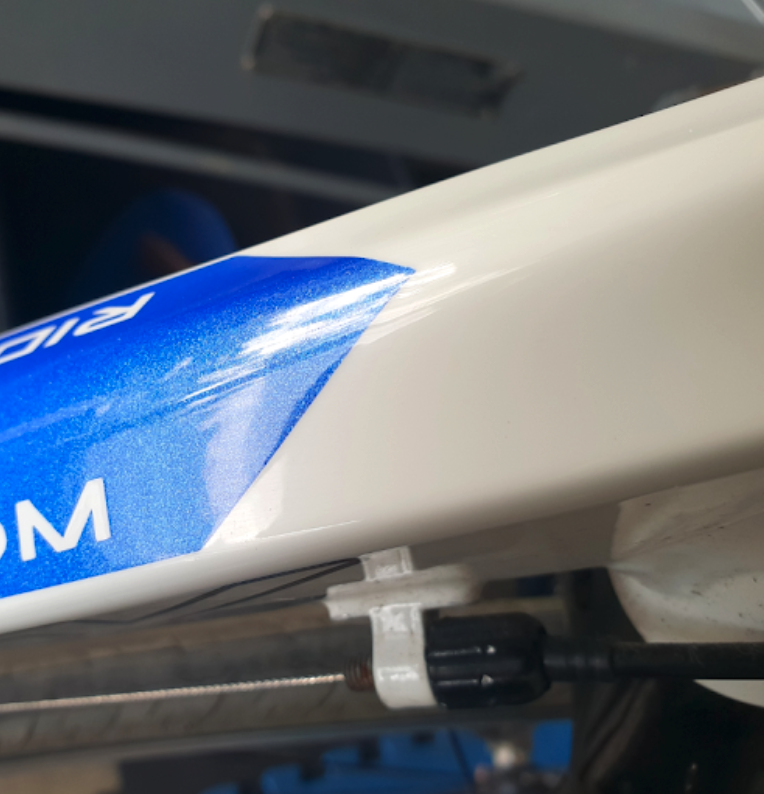Repairing and painting your vehicle can be a complicated process. We aim to help this process by providing application guides and technical datasheets, as well as helpful tips on how to carry out repairs, touch ups and resprays to your vehicle. We want to make completing your project easy.
Location
Location is an important factor to consider, as 2k paint contains isocyanates which can be dangerous to your health. It must be sprayed in a controlled environment, such as a spray booth, to ensure safety. If you don’t have access to a spray booth, you may want to consider acrylic lacquer or enamel as these paints do not contain isocyanates.
Colour
The color you want to paint your vehicle is also an important factor. Some colors may not be available in enamel and acrylic. If you are going for a late-model pearl or basecoat candy finish, you may be stuck with no choice other than 2 pack. However, there are still some great colour options available in acrylic lacquer.
Quality
In terms of quality, it’s hard to beat a 2k finish for gloss and longevity. 2k provides the best off-the-gun finish, requiring little cutting and polishing to finish. Acrylic lacquer, on the other hand, usually requires a full cut and polish to bring up the gloss. It does buff up to a beautiful gloss, but it takes more time and effort to get there. Enamel is cheaper, but it doesn’t offer the same high gloss level as 2k and acrylic. It can’t be buffed, and it tends to go chalky over time. If you choose to use enamel, make sure you use a quality automotive or performance enamel, as these enamels are usually acrylic-modified to help with gloss holdout and hardness.
Budget
2 pack tops the list for cost. However, while it may cost more upfront than other options like enamel or acrylic lacquer, 2 Pack provides a longer-lasting finish and achieves better results with less effort. The finish is hard-wearing and resistant to fading, making it a great choice for those who want a high-quality finish that will stand the test of time.
Acrylic lacquer is a still great option, particularly for those on a tighter budget. It’s a much more affordable option that can still produce excellent results. It’s also easy to apply and dries quickly, making it a great choice for those who want to get the job done fast.
Enamel is a cheap option that’s great for vehicle chassis and other underbody areas. It’s also a good option for machinery and equipment. However, it’s not recommended as an exterior car paint finish because it’s not as durable or long-lasting as other options.
Not sure what paint to use? Call (07) 5442 3197 and talk to one of or paint technicians. We have trade qualified staff who are more than happy to help you choose the right product for you situation.
The best type of primer to use before painting your car will depend on the condition of your car’s surface and the type of paint you plan to use.
For 2-Pack, if you are painting over a bare metal surface, it’s recommended to use an epoxy primer. This type of primer provides excellent adhesion, corrosion resistance, and promotes paint durability.
If you are painting over an existing paint surface, it’s recommended to use a polyurethane primer. This type of primer is a high-build primer that fills in small imperfections and helps to create a smooth surface for the paint to adhere to.
If you are painting over plastic, it’s recommended to use a specialised plastic primer. This type of primer is specially formulated to adhere to plastic surfaces.
It’s always recommended to consult with a professional or the paint manufacturer product datasheet to make sure that you’re using the right primer for your car’s surface, conditions, and paint type.
There are many tools and equipment that may be needed for car restoration, depending on the extent of the work and the specific make and model of the car. Some common tools and equipment that may be needed include:
It’s always recommended to consult with a professional or the paint manufacturer to make sure that you’re using the right tools and equipment for your car’s restoration process.
Carrying out an automotive touch up paint repair using a spray can can be a quick and convenient way to restore the original colour and shine of your car’s paint. However, achieving a seamless blend between the touch up paint and the surrounding areas can be challenging. Here are some tips to help you achieve a professional-looking blend when carrying out an automotive touch up paint repair using a spray can:
In terms of materials, you will need a wax and grease remover, tack cloths, clean lint-free cloths, masking tape and paper, sandpaper (600 or 800 grit), primer, touch-up paint and clear coat. It’s important to follow the manufacturer’s instructions for all the products you are using. By following these tips, you can achieve a professional-looking blend when carrying out an automotive touch up paint repair using a spray can. Remember to be patient and take your time, as blending paint can be a delicate process that requires a steady hand and a keen eye.
Yes, our team has extensive knowledge of the paint products we sell and can provide technical advice on how to use the paint, mixing ratios, application techniques, safety precautions and more.




© Kustom Paints & Industrial - All Rights Reserved 2022